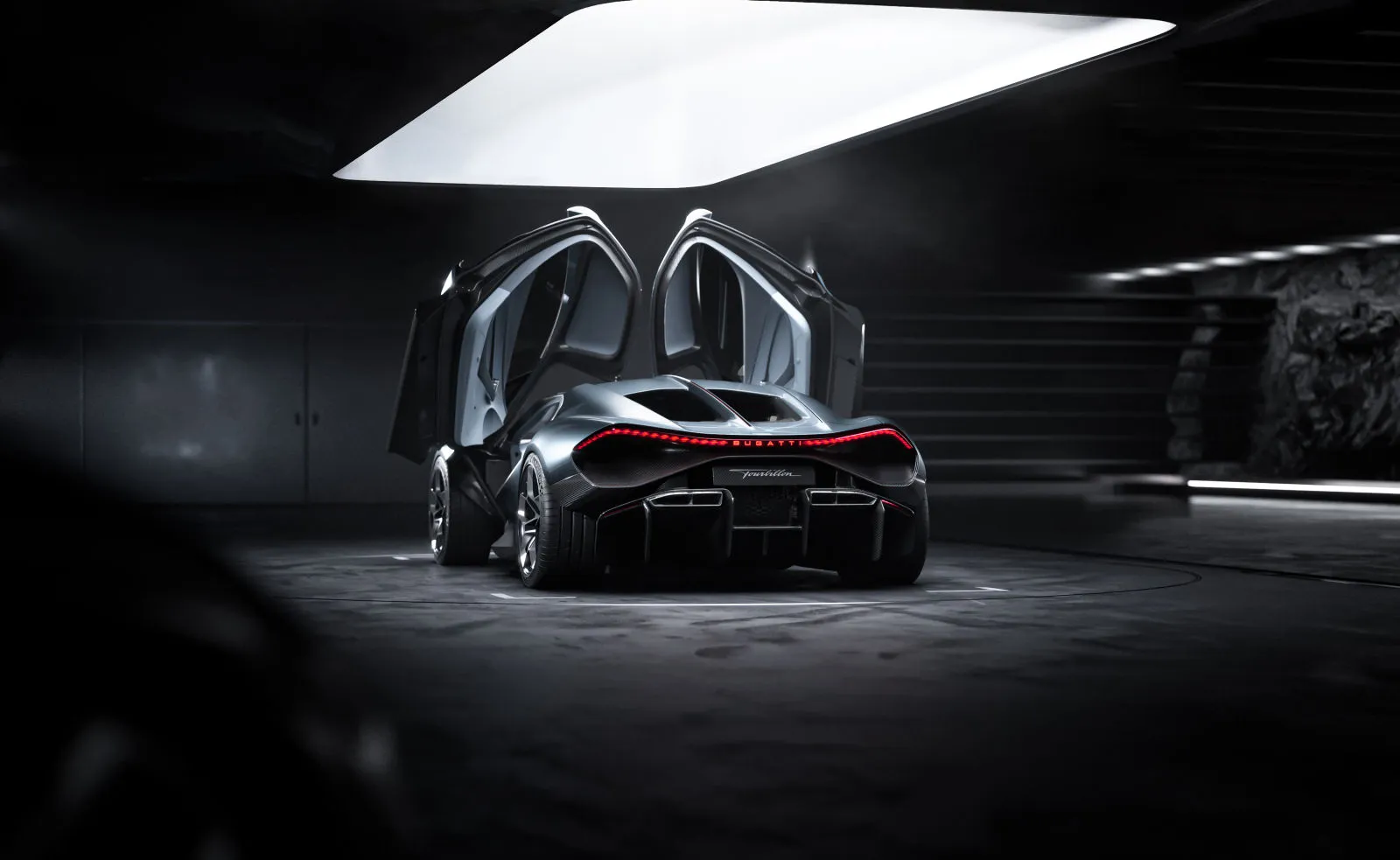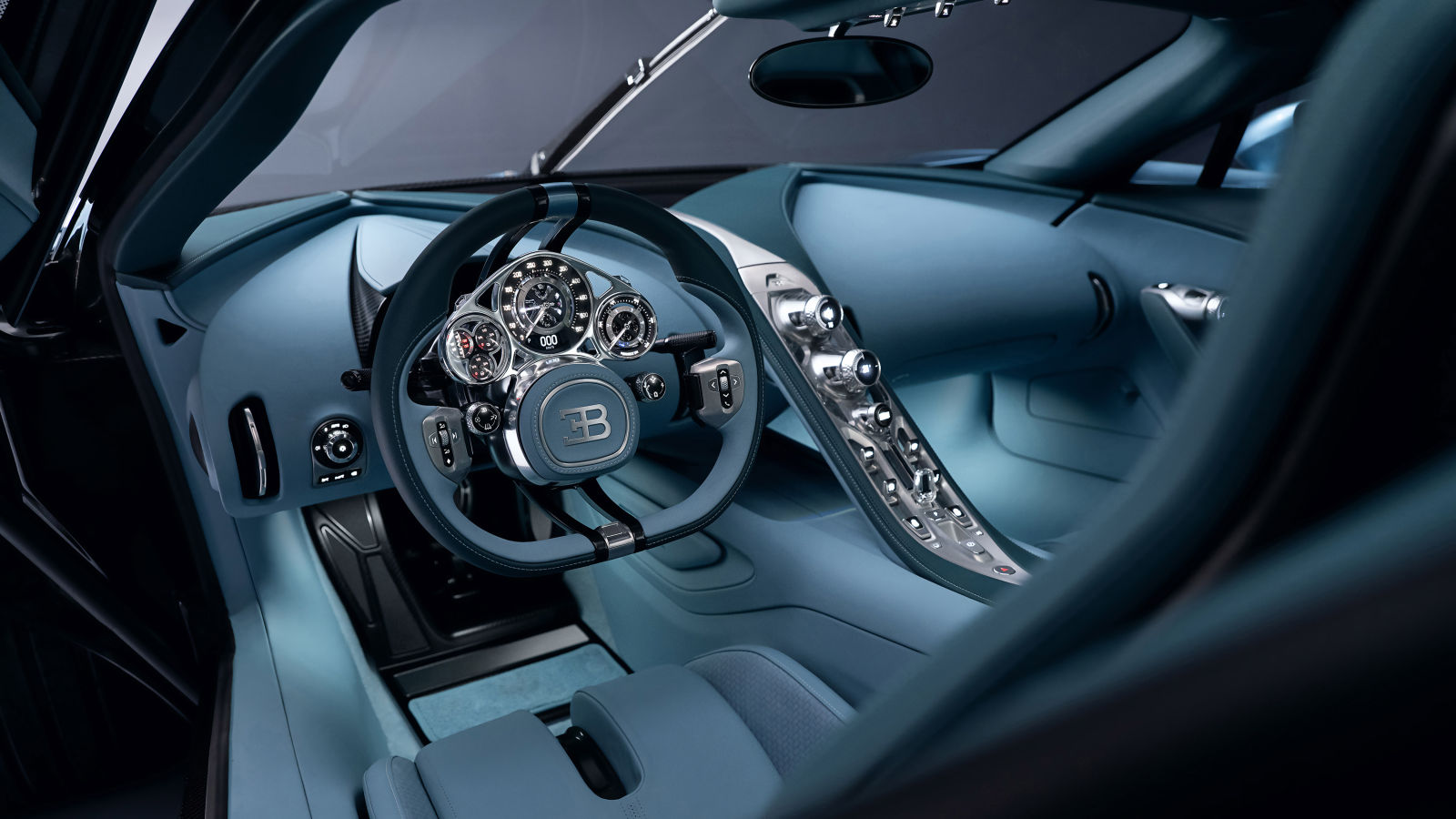Bugatti’s Chiron Super Sport was a revelation for the company in 2021. Featuring a hand-built W16 engine made up of 3,500 parts, the hypercar can zoom from zero to 62 miles per hour in 2.4 seconds. After setting multiple speed records, the Chiron seemed like a tough act to follow. However, in that same year a joint venture called Bugatti Rimac was launched in Croatia, led by EV wizard and entrepreneur Mate Rimac, and Rimac became the CEO of Bugatti.
Soon after, the process of developing the automaker’s latest masterpiece, the 2026 Bugatti Tourbillon, began. While it shares much of the design language with other Bugatti models that came before it, the Tourbillon is completely new from the ground up. That includes a handmade V16 engine that’s assisted by three electric motors for a mind-bending 1775 horsepower.
One might think that the latest hypercar would include cutting-edge technology, self-driving features, and screens plastered all over the dash. Maybe even an immersive three-dimensional head-up display. Nope, not for Bugatti. The Tourbillon was deliberately and painstakingly crafted to achieve what the company calls “an analog driving experience” that will remain a classic for the next century.
After all, as Rimac pointed out to me during Monterey Car Week, one thing that quickly and clearly shows a car’s age is technology, and especially screens. Instead, Bugatti studied Swiss watchmakers to create a cabin that will look as elegant as it does now in 100 years. Even the name—Tourbillon—is a departure from Bugatti’s typical naming pattern. In the past, cars were named after legendary Bugatti racecar drivers. The Tourbillon sets itself apart with a French name for watchmaking.
Superb Swiss Watchmaking Meets Fast French Cars
At The Quail car show this month, Mate Rimac points at the new all-electric Rimac Nevera R on display in front of us and says, “This car is completely digital.” Then he swivels and opens his hand toward the Tourbillon to talk about its opposite, old-world themes. While his career history is punctuated with one technological marvel after another, Rimac took the words of Ettore Bugatti, the company’s namesake, to heart during the making of the Tourbillon. To wit: If it’s comparable, it’s no longer Bugatti.
“If you had asked somebody five years ago ‘What kind of Bugatti would Mate make?’ they would all say, ‘Well, it’ll be a very tech electric car,’” Rimac says. “But I understood we had to reinvent. It can’t just be the same thing. It has to be different, because it’s a Bugatti.”
Inspired to create something completely new, the team jumped on a plane and flew to Switzerland to meet with some of the world’s preeminent watchmakers. Rimac laid out his vision for what would become the Tourbillon and asked them if it was possible to make it a reality.


“When I told the watchmakers what I wanted to do, they said, ‘Wow, yes, we want to do that.’ And it worked out beautifully,” he says.
The Tourbillon’s instrument cluster is made up of more than 600 parts and constructed from titanium along with gemstones like sapphires and rubies. The glass that covers the gauges took 13 separate stages to develop to make sure it would be both crystal clear and strong. It’s a brilliant idea, executed with chef’s-kiss style. However, using Swiss watch movements for instruments inside a car is unusual and, in some ways, quite challenging.
“You have vibrations, temperature requirements, and you move fast; watches move slow,” Rimac explains. “It was important to us to do it authentically, not something fake. There’s a real Swiss mechanism behind it.”
More horsepower and instant torque
The other big piece of news for the Tourbillon is the engine, a 16-cylinder V, as opposed to Bugatti’s groundbreaking W16. Mated to three electric motors, the V16 can rev up to 9,000 RPM and achieve high horsepower output.
Incredibly, the Tourbillon is lighter than the Chiron even with the three-motor system and a 25 kWh oil-cooled 800-volt battery inside. The electrical system is all new, and zonal architecture keeps everything tidy and minimized, says company chief technology officer Emilio Scervo.
How does one improve on an icon like the Chiron? Mate Rimac saw an opportunity.
“I didn’t like the torque of the Chiron,” he says candidly. “You push the pedal and nothing happens for two seconds. I mean this is fine; you have all the drama of this W16 quad turbo engine. It’s the most amazing engine ever was and ever will be.”
Yet, he says, with the combination of electric motors and combustion engine, Tourbillon drivers won’t experience any lag. Acceleration is immediate.
“So yes, it is crazy to build a new V16 engine, to integrate with a new battery pack and electric motors and to have a real Swiss-made watchmaker instrument cluster and 3D-printed suspension parts and a crystal glass center console,” Rimac said in a press release. “But it is what Ettore would have done, and it is what makes a Bugatti incomparable and timeless.”
Scervo nods, agreeing with his boss.
“We wanted to keep all the magic of the Chiron and get to the next level,” he says. “This is our mission.” From the outside, it looks like they’ve done it. But I’ll have to test it out myself to see.


